Select Language
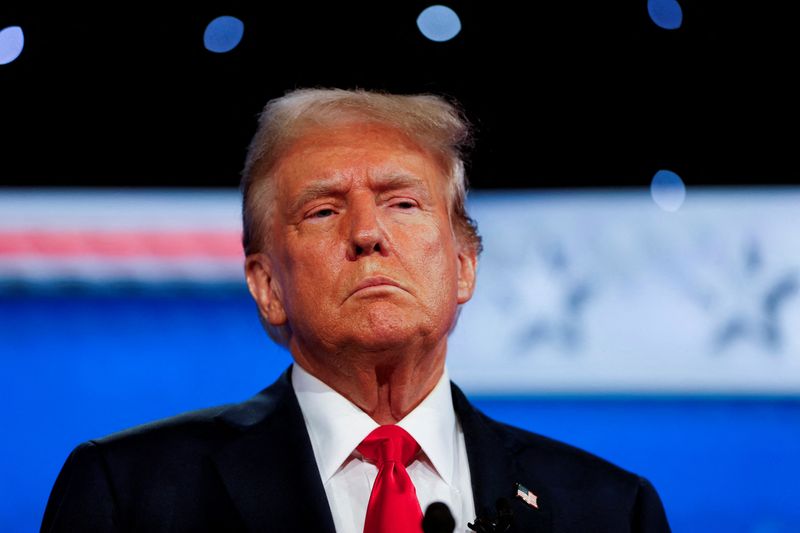
Investing.com-- President-elect Donald Trump is set to implement over 200 executive actions on his first day in office, Fox News Digital reported on Sunday, citing a senior administration official.
The comprehensive measures will address a broad range of policy areas including border security, energy production, federal bureaucracy, and cost-of-living reductions for Americans, the report stated.
Trump will sign multiple omnibus executive orders containing dozens of actions. These include declaring a national border emergency, directing the military and the Department of Homeland Security to secure the southern border, and targeting criminal cartels operating within the U.S. by designating them as foreign terrorist organizations, the Fox report said.
He plans to reinstate policies like “Remain in Mexico” and “Catch and Release” while initiating new phases of border wall construction, it added.
In energy policy, the President-elect will declare a national energy emergency, ending offshore wind leases and repealing Biden-era restrictions on oil, gas, and pipeline projects. The administration aims to fully leverage Alaskan energy resources and withdraw the U.S. from agreements such as the Paris Climate Accord, the report stated.
The sweeping reforms will include federal hiring freezes, merit-based staffing, and eliminating Diversity, Equity, and Inclusion (DEI) programs across the government. Trump also intends to suspend security clearances for officials tied to controversial actions before the 2020 election, according to the report.
Trump’s extensive actions will mark an unprecedented beginning to a U.S. presidency, reaffirming his campaign promise of restoring American greatness, the Fox report said.
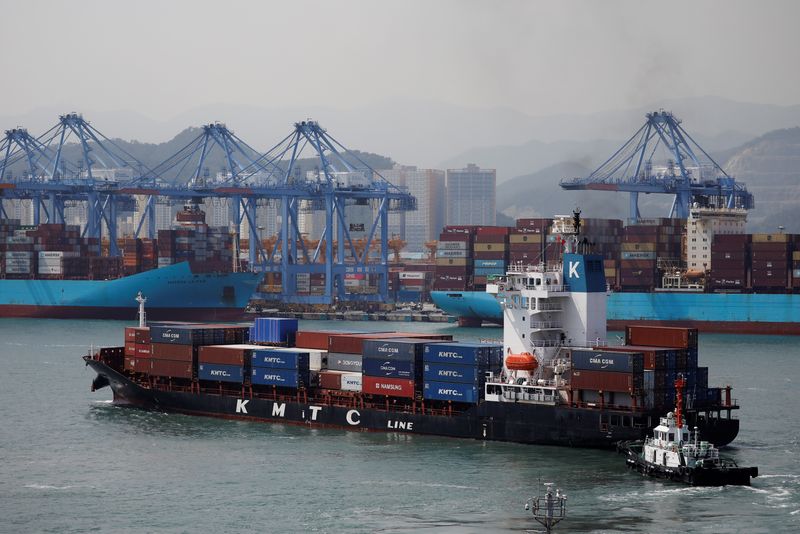
SEOUL (Reuters) - South Korea pledged on Monday a record amount of financing support for exporters to mitigate any negative impact from changes in U.S. trade policies as Donald Trump was poised to be sworn in for his second presidency.
The government plans to provide 360 trillion won ($247.74 billion) worth of policy financing to exporting companies through state-run banks and institutions this year, according to a statement released by the finance ministry.
"There are concerns that external uncertainty will be heightened under the incoming U.S. administration and adversely affect exports," the ministry said.
The ministry said it would also boost insurance support to guard against foreign exchange volatility to 1.4 trillion won this year, from 1.2 trillion won last year, and spending on government projects, such as trade fairs and delegations, to 2.9 trillion won from 2.1 trillion won.
Sectors particularly under threat of new U.S. policies are semiconductors and rechargeable batteries, the ministry said, whereas defence, nuclear energy and shipbuilding sectors are seen as more promising because of room for cooperation with the United States.
U.S. President-elect Trump, who takes office later on Monday, has pledged to impose stiff tariffs on major trading partners, such as Mexico, Canada and China, which are also expected to affect South Korean companies running factories in those countries.
Economists say there are worries that the Trump administration will introduce trade policies against South Korea too, after Asia's fourth-largest economy earned a record-high surplus of $55.7 billion in trade with the U.S. in 2024, up 25.4% from 2023.
The Korea International Trade Association, South Korea's biggest group of exporting companies, projects export growth to slow to 1.8% this year. Last year, South Korea's exports rose 8.1% to a record high of $683.7 billion, as sales to the U.S. rose 10.4%.
($1 = 1,453.1500 won)
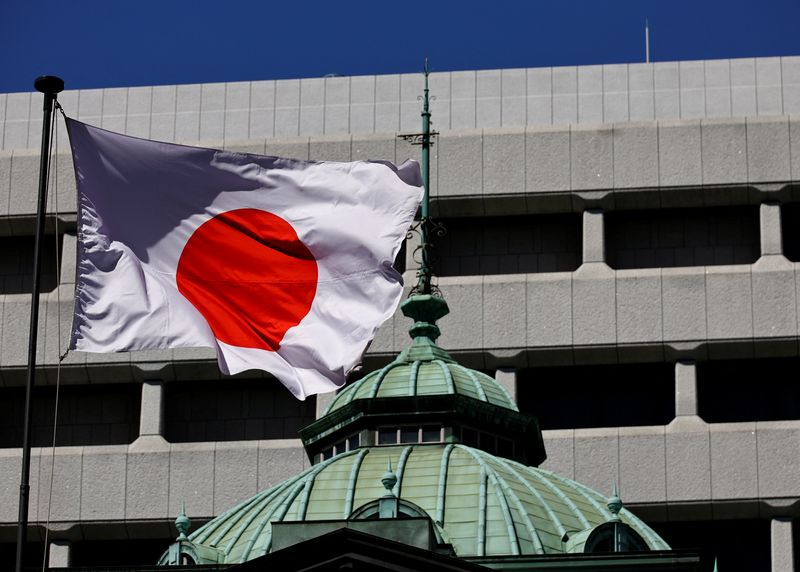
By Leika Kihara
TOKYO (Reuters) - The Bank of Japan is expected to raise interest rates on Friday barring any market shocks when U.S. President-elect Donald Trump takes office, a move that would lift short-term borrowing costs to levels unseen since the 2008 global financial crisis.
A tightening in policy would underscore the central bank's resolve to steadily push up interest rates, now at 0.25%, to near 1% - a level analysts see as neither cooling nor overheating Japan's economy.
At the two-day meeting ending on Friday, the BOJ is likely to raise its short-term policy rate to 0.5% unless Trump's inaugural speech and executive orders upend financial markets, sources have told Reuters.
In a quarterly outlook report, the board is also expected to raise its price forecasts on growing prospects that broadening wage gains will keep Japan on track to sustainably hit the bank's 2% inflation target.
A hike by the BOJ would be the first since July last year when the move, coupled with weak U.S. jobs data, shocked traders and triggered a rout in global markets in early August.
Keen to avoid a recurrence, the BOJ has carefully prepared markets with clear signals by Governor Kazuo Ueda and his deputy last week that a rate hike was on the cards. The remarks caused the yen to rebound as markets priced in a roughly 80% chance of a rate increase on Friday.
There were also hints of near-term action last month. While the BOJ held off raising rates at the Dec. 18-19 meeting, hawkish board member Naoki Tamura proposed pushing up rates. Some of his colleagues also saw conditions fall into place for an imminent rate hike, minutes of the meeting showed.
With a policy tightening this week seen as a near certainty, market attention is shifting to Ueda's post-meeting briefing for clues on the timing and pace of subsequent increases.
As inflation has exceeded the BOJ's 2% target for nearly three years and the weak yen has kept import costs elevated, Ueda is likely to stress policymakers' resolve to continue raising interest rates.
But there is good reason to tread cautiously. While the International Monetary Fund raised its forecast for global growth in 2025, Trump's policies risk destabilising markets and stoking uncertainty about the outlook for Japan's export-reliant economy.
Domestic political uncertainty could heighten, too, as Prime Minister Shigeru Ishiba's minority coalition may struggle to pass budget through parliament and win an upper house election scheduled in July.
The economic damage caused by past ill-fated rate hikes also haunt BOJ policymakers. The BOJ ended quantitative easing in 2006 and pushed short-term rates to 0.5% in 2007, moves that triggered a storm of political criticism as delaying an end to deflation.
The BOJ cut rates from 0.5% to 0.3% in October 2008, then to 0.1% in December of that year, as the global financial crisis pushed Japan into recession. Since then, various unconventional steps have kept borrowing costs stuck near zero.
"Japan had a permanently low growth rate, inflation rate and lower level of interest rates. So policymakers, investors and the business community still ask - have we really broken free from that?," said Jeffrey Young, chief executive officer of DeepMacro.
"The BOJ is going to have to explain very carefully that they're raising rates to move away from the extraordinary policy that they adopted."
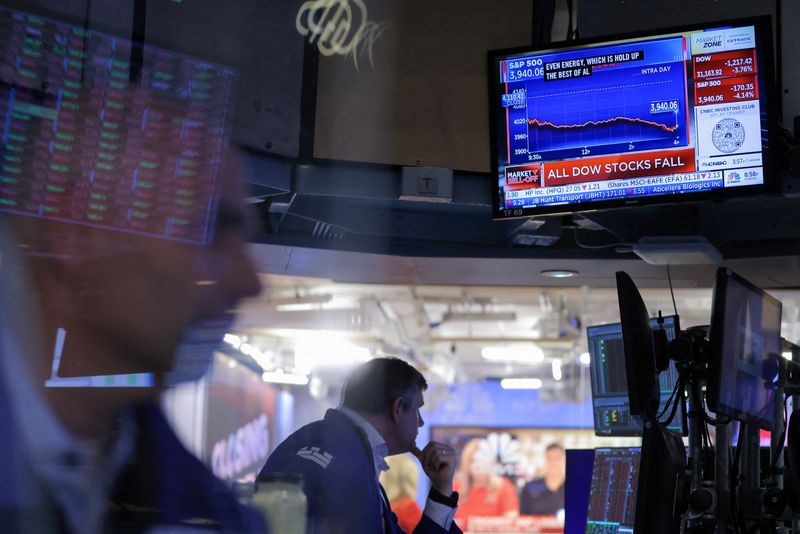
Investing.com -- Global investors will finally get to see the market impact of President-elect Donald Trump's return to the White House. Trump's inauguration on Monday as the 47th U.S. president is expected to trigger a series of executive orders on issues ranging from taxes to tariffs, just as fourth-quarter earnings season gets underway in earnest. Here's your look at what's happening in markets for the week ahead.
1. Trump inauguration
Investors are closely watching as Trump prepares to begin his second term in office on Monday after the incoming president indicated he plans to sign a flurry of executive orders on his first day.
U.S. markets will be closed on Monday for Martin Luther King Jr. Day, so any market fallout may not be fully felt until Tuesday.
Tariff-related moves will be in particular focus, as leaks, counter-leaks, and denials since the election have roiled markets.
Ahead of the inauguration, long-dated U.S. bond yields have risen amid expectations that Trump's proposed tariffs could spark a revival in inflation.
2. Earnings
Investors hoping for another strong year in equity markets powered by U.S. corporate profits will get a clearer outlook this week, with a string of companies set to report fourth quarter earnings.
Key earnings reports will come from streaming giant Netflix (NASDAQ:NFLX), healthcare leader Johnson & Johnson (NYSE:JNJ), consumer goods powerhouse Procter & Gamble (NYSE:PG), and credit card issuer American Express (NYSE:AXP).
Earnings season kicked off last week with big banks reporting higher profits, fuelled by a surge in deal-making and strong equity market performance boosting trading revenues.
Overall, analysts expect S&P 500 companies to report a 10.4% year-over-year increase in fourth-quarter earnings, according to LSEG IBES data from January 15, cited by Reuters.
3. Davos
Global government and business leaders will attend an annual gathering of the World Economic Forum in Davos, Switzerland, starting on Monday.
A WEF survey released ahead of the gathering last week showed that armed conflict is the most severe risk to the global economy in 2025, followed by extreme weather.
Trump is set to address the meeting by video link on Wednesday. Ukraine's President Volodymyr Zelenskiy is also due to attend and will give a speech on Monday, according to the WEF organisers.
Among other global leaders due to attend the Davos meeting are European Central Bank President Christine Lagarde, European Commission President Ursula von der Leyen, UK Chancellor Rachel Reeves and China's Vice Premier Ding Xuexiang.
4. BOJ hike?
The Bank of Japan is to hold its first policy meeting of the year on Thursday and Friday.
In the run up to the meeting BOJ policymakers appeared to be priming markets for a possible rate hike, with both Governor Kazuo Ueda and his deputy Ryozo Himino saying the decision on whether to raise borrowing costs would be up for debate.
BOJ officials will have a few days to weigh up how Trump’s policies could ripple through financial markets before their decision.
A rate hike would narrow the gap between US and Japanese rates, which would bolster the yen. The yen has been hovering close to the 160 level against the dollar, prompting the BOJ to intervene in foreign exchange markets to support the currency.
5. Oil prices
Brent crude futures gained 1.3% last week while U.S. West Texas Intermediate crude futures climbed 1.7% for the week, as the latest round of US sanctions on Russia’s energy trade added to fears over potential supply disruptions.
Oil has risen by 10% so far this month, amid worries about the impact of more Western sanctions on Russian crude.
Energy traders are also weighing up the potential implications of Trump's return to the White House on Monday. Trump's pick for Treasury secretary said he was ready to impose tougher sanctions on Russian oil.
Meanwhile a blast of Arctic air has covered much of the US, sending temperatures plummeting. It is forecast to continue until mid-week, looking set to drive up heating oil demand.

By Naomi Rovnick, Nell Mackenzie and Yoruk Bahceli
LONDON (Reuters) - Investors who had been enjoying a brief rebound in long-suffering UK markets are hunkering down for a stretch of losses as ructions in the pound, government bonds and stocks feed on each other and put Britain at risk of a wave of hedge fund attacks.
As global borrowing costs rise in a trend led by the U.S. Treasury market, the UK's high-debt, low-growth economy that just months ago appeared to be shrugging off years of post-Brexit gloom is now viewed as vulnerable to capital flight.
Traders now expect months of volatility for the pound, which ended 2024 as the top-performing major currency against the dollar due to optimism that the Labour Party's landslide July election win marked the end of years of political instability.
That is creating a negative feedback loop by sapping interest in UK stocks that now face fresh currency risks, and casting doubt over Bank of England interest rate cuts, threatening already stagnant economic growth as the nation's debt burden rises.
There are signs that the pain will be sustained. Options trading data and evidence from hedge fund industry insiders and securities dealing desks point to speculators having piled into bets against the pound and UK gilts.
"I don't think it's going to end quickly," Brandywine Global fixed income portfolio manager Jack McIntyre said of the UK rout, noting that investors remain scarred by memories of the 2022 gilts and sterling crisis sparked by former Prime Minister Liz Truss' mini-budget.
The U.S.-based asset manager said he had taken on exposure to UK gilts on the basis that these assets would benefit from rate cuts, but hedged this with contracts that profit if sterling, now 2.5% lower versus the dollar this month, keeps falling.
BUYERS' STRIKE
Just months ago, UK markets were shining as a beacon of stability amid political chaos in France and seemed poised to recover from a long period of government turmoil, currency volatility and being shunned by overseas investors.
January's market moves were "refocusing the minds of many around the world on Britain, its economic and its financial condition," said Mario Monti, the economist who was tapped in 2011 to lead Italy as it faced financial implosion.
Long-term UK borrowing costs have touched 27-year highs and the domestically focused FTSE 250 share index is down almost 6% since August. A gauge of buying protection against sterling volatility is near its highest since March 2023.
“The UK is more vulnerable to a buyers' strike post-Brexit because it is a less core holding for many global investors and it has a less obvious growth story," U.S. investment bank Evercore ISI vice-chairman Krishna Guha said by email.
Bank of America this week warned of "a significant worsening of the situation that could lead to disorderly moves in gilts (and) sterling, in turn souring growth sentiment and impacting equities negatively."
'WEAKEST LINK'
Surging debt costs have hampered finance minister Rachel Reeves' plan to revive growth via public investment, while sterling's drop has put the BoE in a bind in case rate cuts fuel more currency weakness, raising import cost inflation.
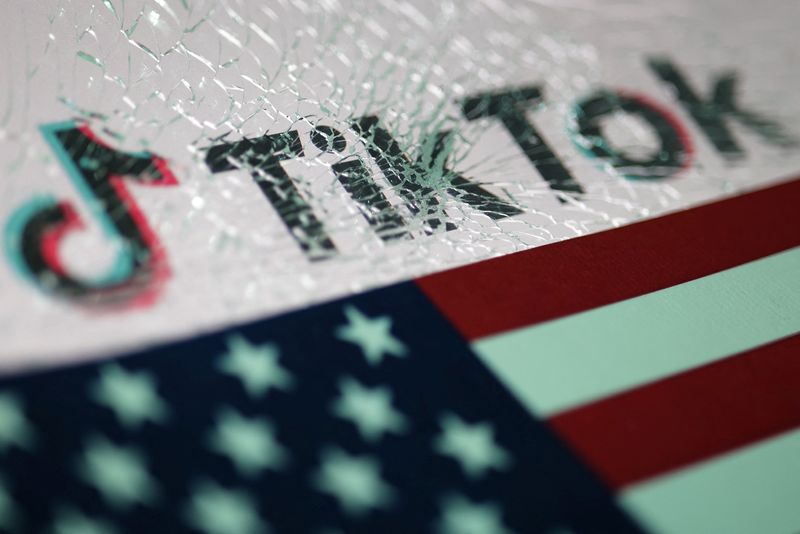
By Katie Paul
NEW YORK - Advertisers reliant on TikTok as a major digital marketing tool rushed to prepare contingency plans this week, as the realization dawned on many that the popular Chinese-owned social media app may not be saved before a U.S. ban takes effect on Sunday.
One marketing executive described it as a "hair on fire" moment for the ad world, after months of conventional wisdom saying that a solution would materialize to keep the short-video app up and running.
"It seemed unbelievable even as of just a few weeks ago to imagine that there would be no TikTok," said Kerry Perse, the founder of marketing firm Influence & Inspire Consulting and former head of social media at Omnicom Group (NYSE:OMC)'s media agency OMD.
"We all thought that any access issues to the TikTok app would be slow and drawn-out," she said.
Chinese tech firm ByteDance is facing a Jan. 19 deadline to sell TikTok's U.S. assets or accept an unprecedented ban of the app, used by 170 million Americans, on national security grounds.
TikTok plans to shut U.S. operations of the app on Sunday barring a last-minute reprieve, Reuters reported on Wednesday.
U.S. President-elect Donald Trump's incoming national security adviser said the new administration plans to put measures in place "to keep TikTok from going dark," but it was not immediately clear whether Trump - who takes office on Monday - could legally do so.
"I think after a long time feeling like this was a 'boy who cried wolf' situation, we may actually have a wolf sighting," said Craig Atkinson, CEO of digital marketing agency Code3.
If a ban does occur, more than $11 billion in annual U.S. ad investment would be up for grabs, according to a forecast from marketing group WARC Media.
Most of that spending is likely to shift to platforms where advertisers are already established and running short-video ad campaigns, primarily Meta's Instagram and Alphabet (NASDAQ:GOOGL)'s YouTube Shorts, four ad agency sources told Reuters.
TikTok staffers appeared to be in the dark about what exactly would happen to the app as of Sunday, the sources said, although two of the sources noted that TikTok was offering favorable refund terms in the event services stop in the middle of advertisers' campaigns. TikTok did not immediately respond to a request for comment.
Even as the ban approached, the company continued to pitch advertisers on new features, like a tool launching in test form on Thursday that would make it easier to create, modify and add advertisements in bulk, according to an email from this week described to Reuters.
It also planned to host a booth at the upcoming World Economic Forum meeting of political and business leaders in Davos, Switzerland, next week, after holding cocktail parties at the Consumer Electronics Show in Las Vegas earlier this month.
Meanwhile, brands and content creators alike were downloading their data en masse in case the app becomes inaccessible as of Sunday, hoping to salvage at least some of the fruits of their labor.
One influencer, who hawks cereal and beauty products in her videos, posted on Tuesday advising her nearly 16,000 followers on how to save their videos.
“Here’s how to download your TikTok data so you don’t lose literally everything you’ve had from the past five years,” said Maria Slate, grimacing, as the words “it’s fine I’m fine” displayed over her head.
The sentiment was a marked change from the dominant mood last month, when advertisers told Reuters they were in no rush to shift their marketing budgets off TikTok despite a U.S. appeals court upholding the law requiring a divestment or ban.
As of Jan. 8, ad spending on TikTok was set to increase 57% in the first two months of 2025, according to Guideline.ai, a research firm that tracks forward booking data from major ad agencies.
TikTok has become a powerful tool for advertisers looking to reach young Americans in particular in recent years, growing to 20% of U.S. social media ad spending from only 2% in 2020, its first full year of operation in the United States, Guideline.ai said.
Part of that power has come from the platform's cultivation of influencers and online shopping culture, which has made it a reliable driver of e-commerce sales.
E-Marketer, another research firm, forecast late last year that some 43.8% of U.S. TikTok users would have made a purchase on the platform by the end of 2024, a higher share than on Meta-owned services Facebook (NASDAQ:META) and Instagram.
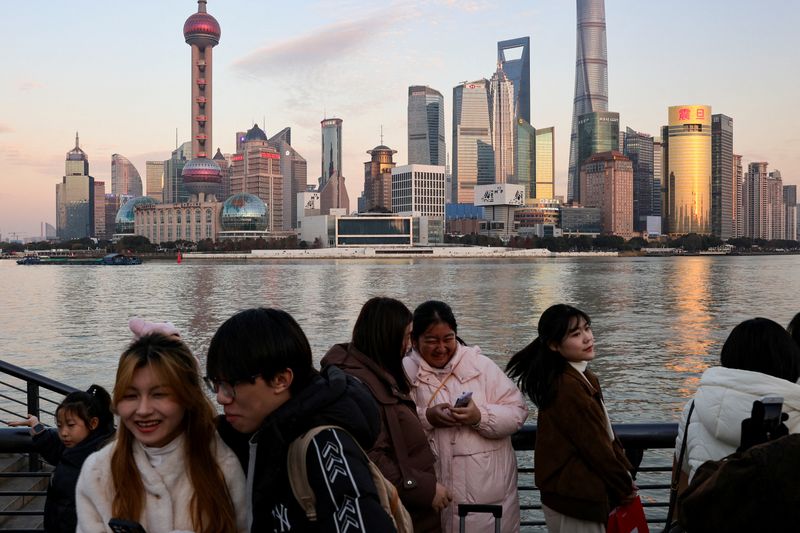
BEIJING (Reuters) -China's economy ended 2024 on better footing than expected helped by a flurry of stimulus measures, although the threat of a new trade war with the United States and weak domestic demand could hurt confidence in a broader recovery this year.
Exports, one of the few bright spots, could lose steam as United States President-elect Donald Trump, who has proposed hefty tariffs on Chinese goods, is set to return to the White House next week.
For the full-year 2024, the world's second-largest economy grew 5.0%, data from the National Bureau of Statistics (NBS) data showed on Friday, meeting the government's annual growth target of around 5%. Analysts had forecast 4.9% growth.
The economy grew 5.4% in the fourth quarter from a year earlier, significantly beating analysts' expectations and marking the quickest since the second quarter of 2023.
Analysts polled by Reuters had forecast fourth-quarter gross domestic product (GDP) would expand 5.0% from a year earlier, quickening from the third-quarter's 4.6% pace as a flurry of support measures began to kick in.
"China's economy is showing signs of revival, led by industrial output and exports," said Frederic Neumann, chief Asia economist at HSBC in Hong Kong.
However, he added, the strong GDP print last quarter may already have been flattered by front-loading of shipments to the U.S. - something that will inevitably lead to a pay-back with production and exports turning down once tariffs begin to bite.
"As exports come under pressure in 2025, dragged lower by U.S. import restrictions, there will be an even bigger need to apply domestic stimulus."
Chinese stocks drew some support following the GDP data. Mainland Chinese blue chips rose 0.3% as of 0207 GMT, while Hong Kong's Hang Seng added 0.14%.
The yuan was little changed against the dollar.
On a quarterly basis, GDP grew 1.6% in October-December, compared with a forecast 1.6% increase and a revised 1.3% gain in the previous quarter.
China's economy has struggled for traction since a post-pandemic rebound quickly fizzled out, with a protracted property crisis, mounting local debt and weak consumer demand weighing heavily on activity.
Policymakers have pledged more stimulus this year, but analysts say the scope and size of China's moves may depend on how quickly and aggressively Trump implements tariffs or other punitive measures.
But even as strong exports propelled the country's trade surplus to a record high of $992 billion last year, the yuan currency has come under selling pressure. A dominant dollar, sliding Chinese bond yields and the threat of higher trade barriers have pushed the yuan to 16-month lows.
A slew of December economic readings on Friday suggested the economy gained traction heading into the new year, helped by a flurry of government support measures.
Even the property sector witnessed signs of recovery as new home prices steadied in December for the first time since June 2023, NBS data showed earlier on Friday. But for the full year, property investment fell 10.6% from the previous year, marking the largest annual decline on record.
Industrial output grew 6.2% from a year earlier in December, quickening from November's 5.4% pace and beating expectations for a 5.4% increase in a Reuters poll. It marked the fastest growth since April last year.
Retail sales, a gauge of consumption, rose 3.7% last month, accelerating from the 3.0% pace in November as consumers started to prepare for the eight day-long Lunar New Year holidays in January.
"It (will) require large and persistent policy stimulus to boost economic momentum and sustain the recovery. To contain the rising unemployment rate the fiscal policy stance needs to become more proactive," Zhiwei Zhang, chief economist at Pinpoint Asset Management in Hong Kong.
As businesses remained wary of adding workers before the festival and with concerns over possible trade disputes with the U.S., the nationwide survey-based jobless rate climbed to 5.1% in December from November's 5.0%.

Investing.com-- U.S. President-elect Donald Trump is preparing to sign an executive order making cryptocurrency a national policy priority and granting industry leaders a significant role in shaping regulations, Bloomberg reported on Friday citing sources.
The move could reshape how the U.S. government approaches digital assets, marking a sharp turn from the current administration’s enforcement-heavy strategy.
The forthcoming order, expected as early as Monday, aims to elevate cryptocurrency to a national imperative. It may establish a crypto advisory council to advocate industry-friendly policies, signaling a warmer stance after years of regulatory crackdowns, the report stated.
Bitcoin was 0.4% higher at $100,285.5 as of 19:34 ET (00:34 GMT).
Federal agencies under President Joe Biden filed over 100 enforcement actions against crypto firms, including Binance and Ripple, and tightened restrictions on banking access for the sector following scandals such as FTX’s collapse.
Key measures under consideration include a review of existing digital asset policies by all federal agencies and a potential pause on litigation against crypto firms, Bloomberg said, citing unnamed sources familiar with the plans.
Notably, the order may create a national Bitcoin stockpile using the government’s $20 billion in confiscated Bitcoin holdings, the report stated.
Trump, who actively supported crypto during his campaign, has pledged to make the U.S. the global leader in digital assets.
The executive order, if issued, would build on momentum from private industry. Major financial players like BlackRock (NYSE:BLK) and BNY Mellon (NYSE:BK) launched crypto products, while Cantor Fitzgerald announced a Bitcoin financing venture, according to the report.
Bitcoin has rallied significantly since Trump’s election in November, reaching a record high above the $108,000 mark last month, bolstered by optimism surrounding his pro-crypto stance.
The executive order remains under discussion and could change, Bloomberg added.

By Andrea Shalal
WASHINGTON (Reuters) -The World Bank on Thursday warned that U.S. across-the-board tariffs of 10% could reduce already lackluster global economic growth of 2.7% in 2025 by 0.3 percentage point if America's trading partners retaliate with tariffs of their own.
U.S. President-elect Donald Trump, who takes office Monday, has proposed a 10% tariff on global imports, a 25% punitive duty on imports from Canada and Mexico until they clamp down on drugs and migrants crossing borders into the U.S., and a 60% tariff on Chinese goods. Some countries including Canada have already vowed to retaliate.
The World Bank said simulations using a global macroeconomic model showed a 10-percentage point increase in U.S. tariffs on all trading partners in 2025 would reduce global growth by 0.2 percentage point for the year, and proportional retaliation by other countries could worsen the hit to growth.
It said those estimates were consistent with outside studies which showed a 10-point increase in U.S. tariffs could "reduce the level of U.S. GDP by 0.4%, while retaliation from trading partners would increase the total negative impact to 0.9%."
But it noted that U.S. growth could also increase by 0.4 percentage point in 2026 if U.S. tax cuts were extended, it said, with only small global spillovers.
The Bank for International Settlements on Thursday also chimed in, warning of increased "frictions and fragmentation" in global trade and calling a broad-based trade war between Washington and other countries "a tangible risk scenario."
The World Bank's latest Global Economic Prospect report, issued twice yearly, forecast flat global economic growth of 2.7% in 2025 and 2026, the same as in 2024, and warned that developing economies now faced their weakest long-term growth outlook since 2000.
The multilateral development bank said foreign direct investment into developing economies was now about half the level seen in the early 2000s and global trade restrictions were five times higher than the 2010-2019 average.
It said growth in developing countries is expected to reach 4% in 2025 and 2026, well below pre-pandemic estimates due to high debt burdens, weak investment and sluggish productivity growth, along with rising costs of climate change.
Overall output in emerging markets and development economies was expected to remain more than 5% below its pre-pandemic trend by 2026, due to the pandemic and subsequent shocks, it said.
"The next 25 years will be a tougher slog for developing economies than the last 25," World Bank chief economist Indermit Gil said in a statement, urging countries to adopt domestic reforms to encourage investment and deepen trade relations.
Economic growth in developing countries dropped from nearly 6% in the 2000s to 5.1% in the 2010s and was averaging about 3.5% in the 2020s, the bank said.
It said the gap between rich and poor countries was also widening, with average per capita growth rates in developing countries, excluding China and India, averaging half a percentage point below those in wealth economies since 2014.
The somber outlook echoed comments made last week by the managing director of the International Monetary Fund, Kristalina Georgieva, ahead of the global lender's own new forecast, to be released on Friday.
"Over the next two years, developing economies could face serious headwinds," the World Bank report said.

Investing.com - The UK economy returned to growth in November, after the contraction seen in the prior month, but economic activity in the fourth quarter remains subdued, piling the pressure on the Bank of England to ease monetary policy further in 2025.
Data released earlier Friday by the Office for National Statistics showed that the UK economy grew by 0.1% in November, below the 0.2% expected, after contracting by 0.1% in October. This resulted in an annual growth rate of 1.0%, a drop from the revised lower 1.1% the prior month..
This sombre start to the fourth quarter marks a significant slowdown in growth momentum and output activity compared to the robust performance in the first half of the year.
Additionally, consumer and business confidence across major industries has declined significantly, compounding the existing headwinds, while the forthcoming increase in employers’ National Insurance Contributions, announced in the Autumn Budget, is expected to weigh on the labor market and dampen growth.
Throw in the potential for new tariff policies from the upcoming Trump administration and the possibility of a cut to government spending as the new Labour government contends with rising bond yields and significant downside risks to growth exist.
The International Monetary Fund forecasts that the UK will grow by 1.1% in 2024, which is slower than previous periods but would put the UK in the middle of the pack of the world's leading nations.
The BoE has reduced its benchmark Bank Rate twice since August - less than other central banks - and it has stressed it is likely to move gradually on further interest rate cuts, given persistent inflation pressures in Britain's economy.
It next meets in early February, and the pressure is mounting on the central bank to cut interest rates again, having last moved in November, reducing its base rate then to 4.75% from 5%.

